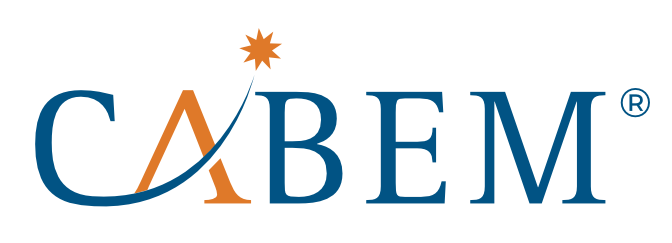6 Reasons Training Feedback Matters
Collecting and acting on training feedback is one of the most potent ways organizations can improve the effectiveness of their learning and development programs. It goes beyond measuring satisfaction—it’s about understanding how well training supports real-world job performance, aligns with business goals, and contributes to long-term skill development. When embedded into a competency-based learning framework, feedback becomes a strategic asset that informs program design, uncovers knowledge gaps, and drives continuous improvement. With the right tools and processes, training feedback transforms learning from a one-time event into a scalable, data-informed system that fuels workforce growth and organizational success.
At CABEM, we understand that training isn’t just about knowledge delivery—it’s about competency development, behavior change, and aligning talent with organizational goals. That’s why training feedback plays a pivotal role in competency-based learning strategies.
In this guide, you’ll discover how to collect, analyze, and act on employee feedback to transform training into a strategic advantage.
What Is Training Feedback?
Training feedback is the structured process of gathering participant insights about the effectiveness, relevance, and delivery of training programs. It provides a dual lens:
- Learner experience: Engagement, satisfaction, relevance, and confidence.
- Business impact: Skill application, performance change, and ROI alignment.
Done well, training feedback becomes a continuous loop of measurement, analysis, and improvement, ensuring learning programs evolve with your workforce.
Why Training Feedback Matters
Effective training feedback is a critical driver of continuous learning and organizational improvement. When aligned with a competency-based framework, feedback doesn’t just measure satisfaction—it becomes a lens for understanding whether training is equipping employees with the right skills, behaviors, and knowledge to perform effectively in their roles.
By collecting structured feedback at key points in the learning journey, organizations can link individual training outcomes directly to performance improvements and business impact.
1. Identifying Knowledge and Skill Gaps
Training feedback uncovers gaps between what employees know today and what they need to know to succeed in their roles. Feedback helps reveal:
- Where participants lack confidence or understanding
- Specific topics that are unclear, confusing, or incomplete
- Skills that were expected but not adequately covered
With this insight, learning and development (L&D) teams can tailor future training sessions to address those gaps more precisely. CABEM’s platform enhances this by allowing organizations to align feedback with competency tracking, ensuring that every skill deficiency is addressed within a structured development path.
2. Improving Content Quality and Delivery Methods
Participant feedback provides a candid assessment of the training materials, instructional design, and delivery style. It highlights:
- Whether examples and case studies are realistic and relevant
- How effective instructors are at engaging learners
- If pacing, format, or technical delivery hinder learning
This real-time insight enables trainers to adapt future programs for clarity, engagement, and accessibility. When paired with CABEM’s system, organizations can map these improvements directly to specific competencies, ensuring that training delivery supports both learner satisfaction and skill attainment.
3. Aligning Learning Objectives with Organizational Goals
Feedback reveals whether training aligns with the strategic goals of the organization. Are employees learning what the business actually needs? Through targeted feedback questions, you can assess whether learners feel the training:
- Helps them do their job more effectively
- Supports departmental goals or compliance requirements
- Aligns with emerging priorities or industry standards
CABEM empowers this process by helping organizations define and measure role-based competencies. Feedback collected through the platform can be directly linked to these competencies, ensuring that training is always relevant, practical, and strategically aligned.
4. Justifying Training Investments Through ROI
Feedback plays a pivotal role in calculating training return on investment (ROI). By capturing improvements in performance, confidence, and productivity, organizations can:
- Demonstrate the business value of training programs
- Make data-driven decisions about where to scale or adjust
- Secure ongoing support and funding from executive leadership
CABEM’s competency management system provides robust reporting tools that connect feedback to performance metrics, certification status, and compliance levels—offering a tangible view of how learning investments drive results.
5. Boosting Employee Engagement and Retention
Employees who feel heard, supported, and developed are more likely to stay with your organization. Collecting and acting on training feedback sends a powerful message that their growth matters. This fosters:
- Greater ownership of learning
- Increased motivation to apply new skills
- More substantial alignment with company culture and values
By integrating feedback into CABEM’s software, you can show employees how their training contributes to their personal growth path. This sense of progress and purpose significantly boosts engagement, reduces turnover, and strengthens your organization’s talent pipeline.
CABEM’s platform bridges the gap between training feedback and long-term success by aligning feedback with competency development, role-based credentialing, and performance improvement. With a structured, data-driven approach, organizations can move from anecdotal training assessments to a comprehensive, measurable system that supports both individual advancement and organizational excellence.

Essential Feedback Questions
Asking the right questions ensures feedback is actionable. Keep surveys short—8–12 questions—and blend quantitative metrics with open-ended insights.
Content & Relevance
- “How aligned was the training content with your responsibilities?”
- “Which modules were most/least valuable?”
- “What topics should be added in future sessions?”
Delivery & Engagement
- “Rate the instructor’s expertise and delivery (1–10).”
- “Was the pacing appropriate?”
- “Did technical issues affect your experience?”
Learning Outcomes & Application
- “Do you feel confident applying what you learned?”
- “What barriers might prevent application?”
- “What support do you need post-training?”
Best Practices for Training Feedback
Survey Design
- Use mobile-friendly formats
- Show progress indicators
- Offer anonymity for honest responses
- Avoid leading questions
Timing for Maximum Participation
- Send post-training surveys mid-week between 10 AM–2 PM
- Avoid Mondays and Fridays
- Follow-up at 30 and 90 days to measure behavior change
Boosting Response Rates
- Send two to three reminders
- Offer incentives (e.g., coffee gift cards, early training access)
- Ask managers to encourage participation
- Clearly communicate how feedback is used
Analyzing and Acting on Training Feedback
Collecting feedback is just the start. The value lies in analyzing results and implementing changes.
Steps for Actionable Insights
- Categorize responses: Themes like content, delivery, logistics, and outcomes
- Identify trends: Across departments, time periods, or job roles
- Prioritize changes: Based on impact and implementation difficulty
- Report findings: Share with stakeholders via dashboards or summaries
- Monitor improvements: Track how changes influence future feedback
With CABEM’s platform, you can map feedback insights to competency development plans, ensuring every action taken supports employee growth.
Key Performance Indicators (KPIs) to Monitor
- Satisfaction scores (target: 4.2+ on 5-point scale)
- Knowledge retention at 30–90 days
- Skill application percentages
- Training completion/dropout rates
- Net Promoter Score (NPS) for training advocacy
Use these KPIs to validate ROI, justify budgets, and continuously improve training delivery.
Aligning Training Feedback with Competency Management
Feedback data becomes even more powerful when tied to competency models, as enabled by CABEM’s platform. Here’s how:
- Pre-training feedback aligns training content with current competency gaps.
- Post-training surveys validate whether competency goals were met.
- Behavioral feedback supports credentialing and compliance documentation.
- Long-term tracking reveals trends across departments or locations, helping plan future training investments.
Conclusion
Training feedback is not just a checkbox. It’s a vital tool for shaping high-performing teams, optimizing programs, and driving measurable business results—especially when aligned with competency development.
With CABEM’s configurable platform, you can seamlessly gather feedback, tie it to competencies, and create a continuous learning ecosystem that supports compliance, upskilling, and performance improvement.
Ready to optimize your training feedback strategy? Get in touch with CABEM to learn how we can support your competency-based training initiatives.

